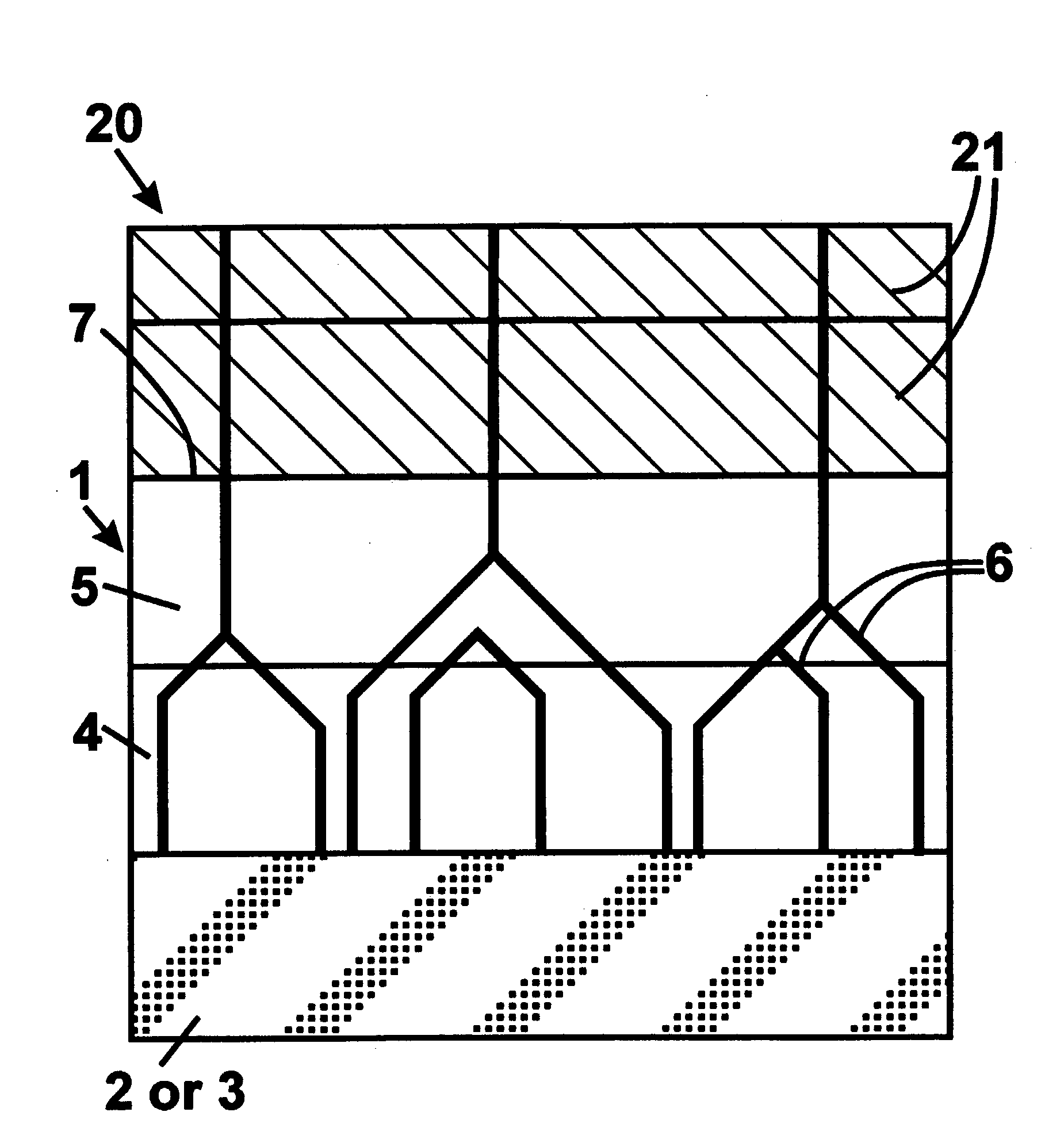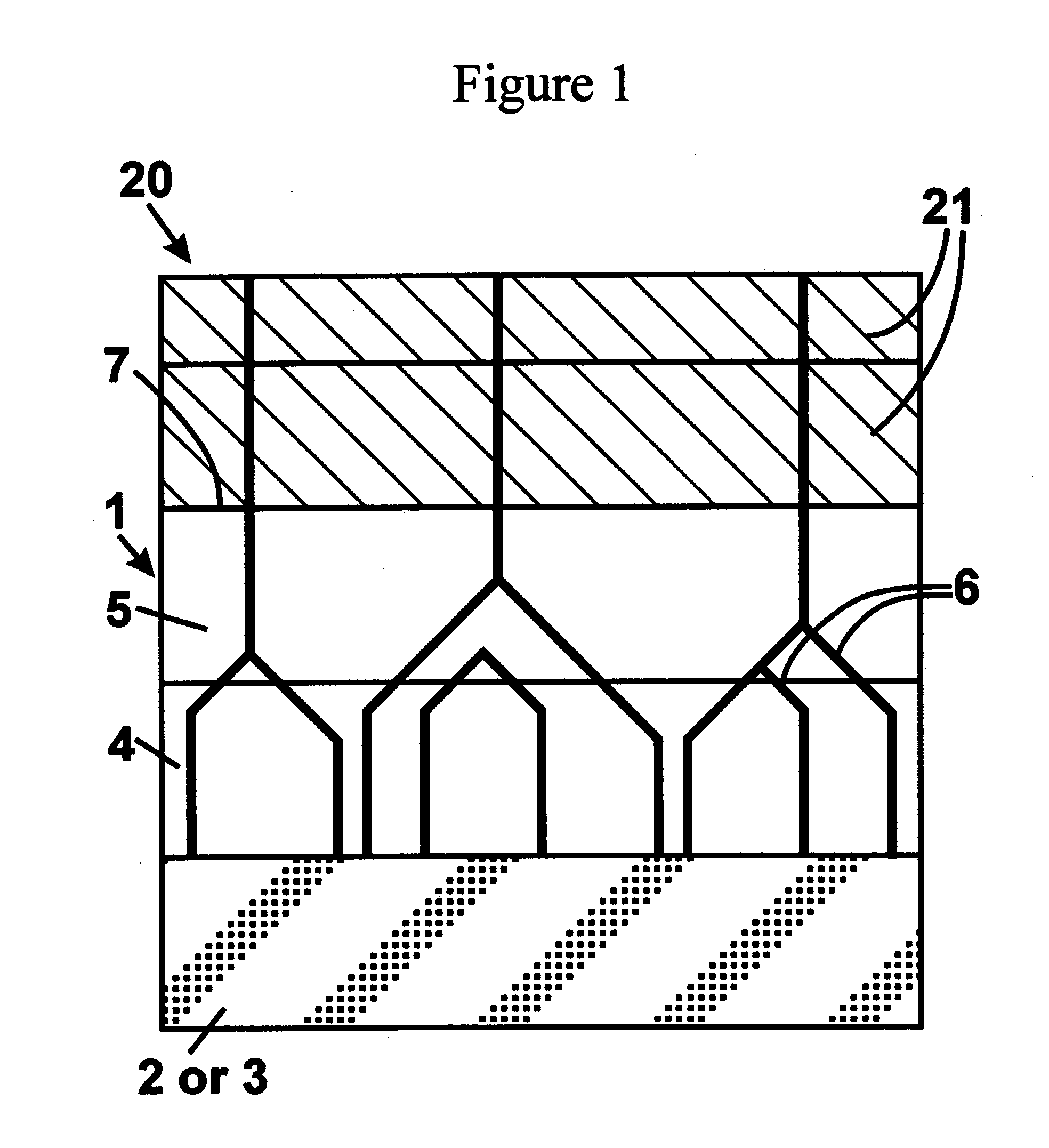Semiconductor Substrate, Semiconductor Device and Method of Manufacturing a Semiconductor Substrate
a semiconductor substrate and semiconductor technology, applied in the field of semiconductor substrates, can solve the problems of limited dislocation-free areas, essentially non-equilibrium defects, and techniques that cannot be used for narrow devices like laser diodes, and achieve enhanced probability of dislocation reactions, increased area, and high index facets
- Summary
- Abstract
- Description
- Claims
- Application Information
AI Technical Summary
Benefits of technology
Problems solved by technology
Method used
Image
Examples
Embodiment Construction
[0039]Reference will now be made in detail to the embodiments and examples relating to the present invention, which are illustrated in the accompanying figures.
[0040]The semiconductor device 20 of FIG. 1 comprises a semiconductor substrate 1. Semiconductor substrate includes a foreign substrate 2 or a highly dislocated layer 3 of the semiconductor substrate materials, a dislocation redirection layer 4 and a dislocation reaction layer 5. Device layers 21 are grown on the semiconductor substrate surface 7. Threading dislocations (TDs) 6 formed in the early stage of the dislocation redirection layer 4 growth deviate upper in the layer from the initially vertical orientation. In the dislocation reaction layer 5 TDs 6 coalesce with each other thus reducing the dislocation density of the semiconductor substrate 1. As result, the semiconductor substrate surface 7 is of high crystalline quality with a low dislocation density and as such well suitable for further growing of the device layers...
PUM
| Property | Measurement | Unit |
|---|---|---|
| thickness | aaaaa | aaaaa |
| thickness | aaaaa | aaaaa |
| temperature | aaaaa | aaaaa |
Abstract
Description
Claims
Application Information
 Login to View More
Login to View More - R&D
- Intellectual Property
- Life Sciences
- Materials
- Tech Scout
- Unparalleled Data Quality
- Higher Quality Content
- 60% Fewer Hallucinations
Browse by: Latest US Patents, China's latest patents, Technical Efficacy Thesaurus, Application Domain, Technology Topic, Popular Technical Reports.
© 2025 PatSnap. All rights reserved.Legal|Privacy policy|Modern Slavery Act Transparency Statement|Sitemap|About US| Contact US: help@patsnap.com



